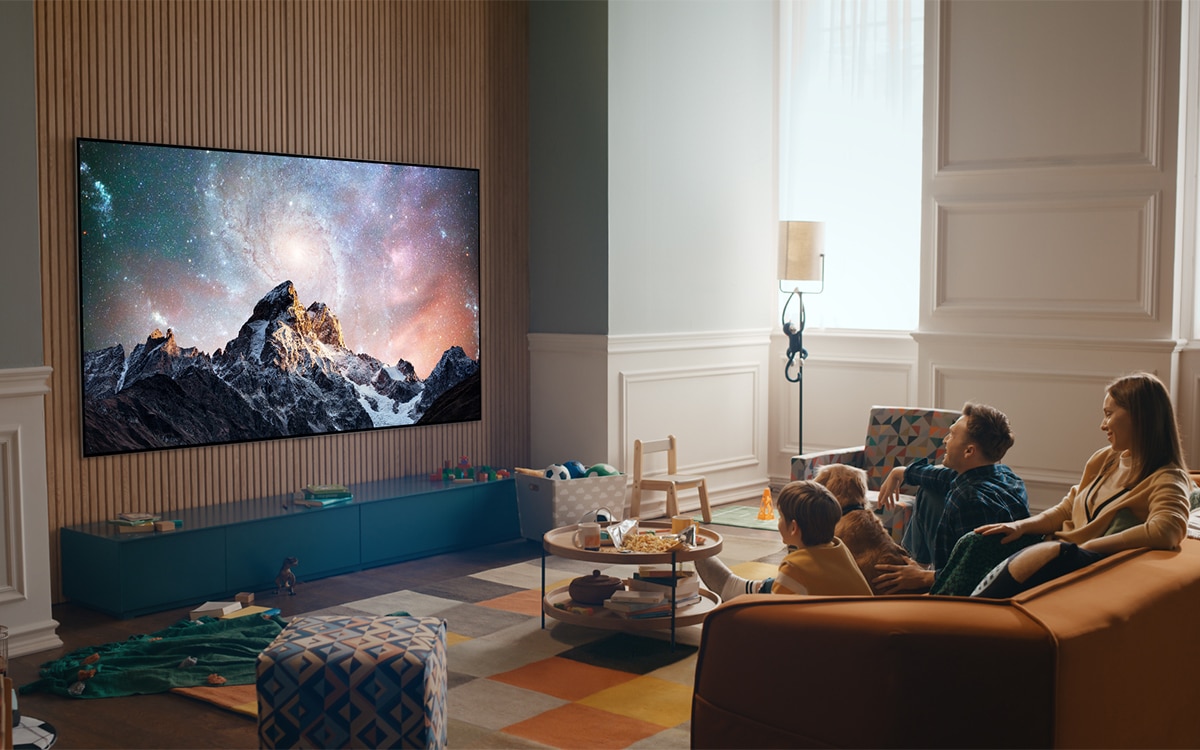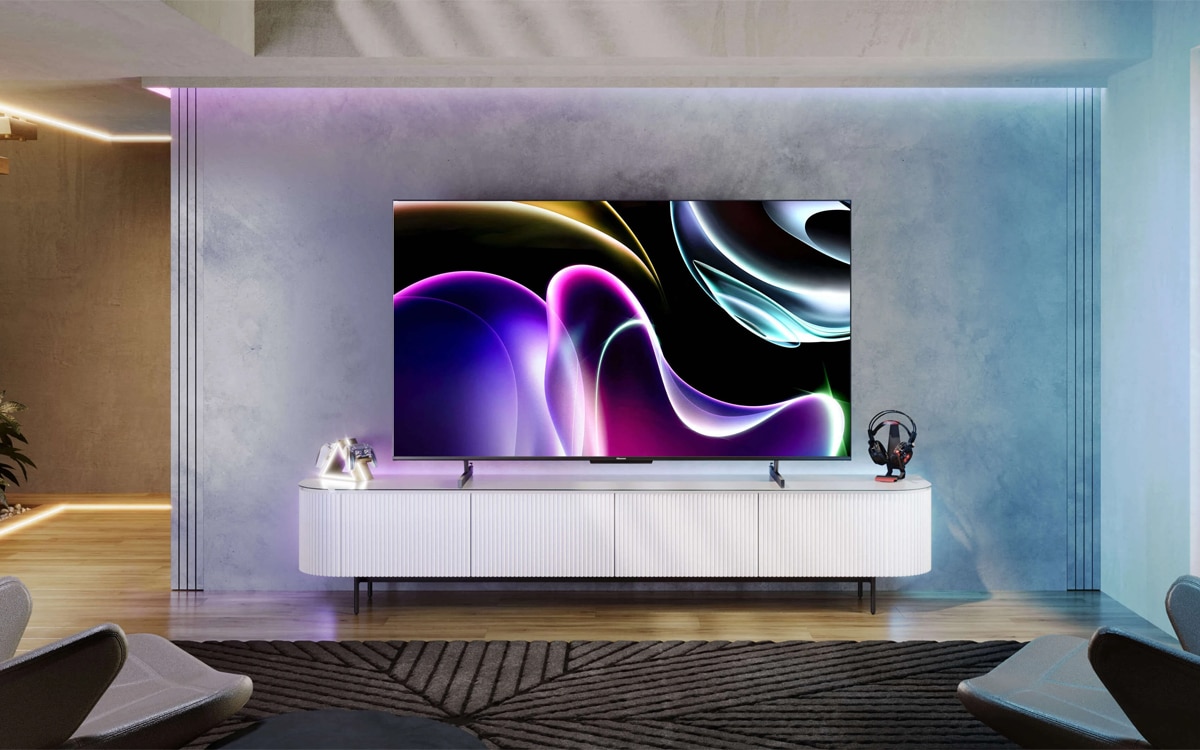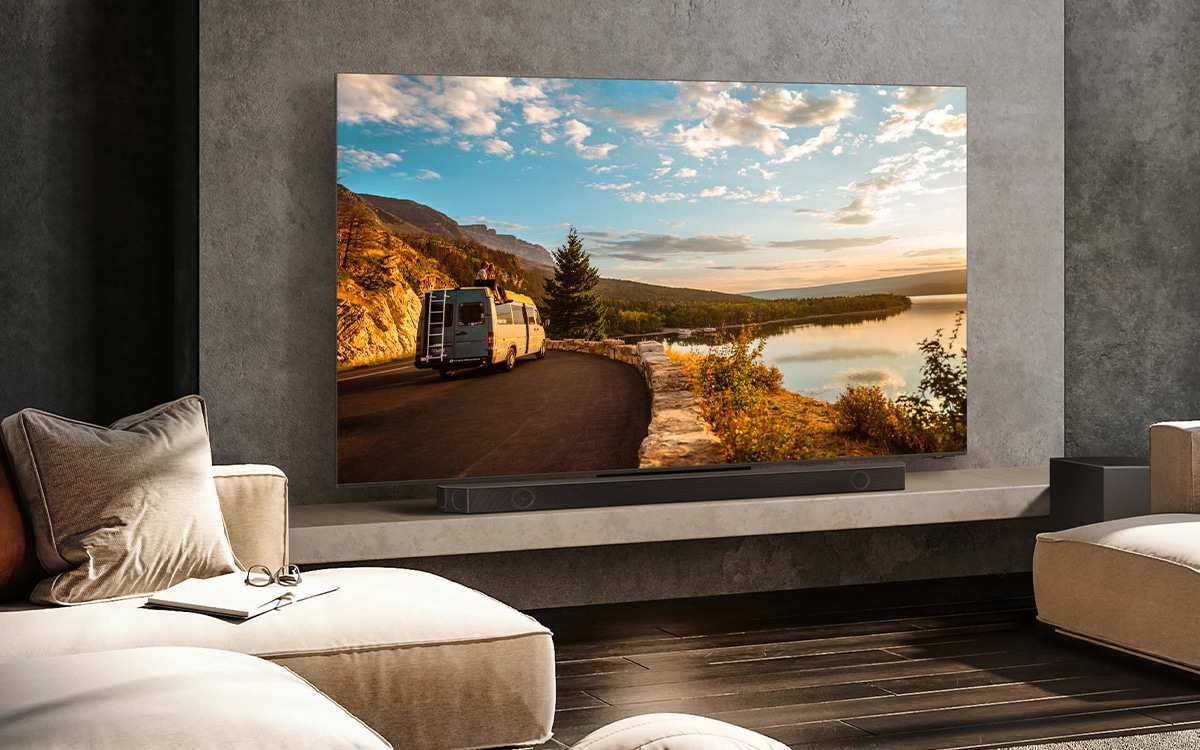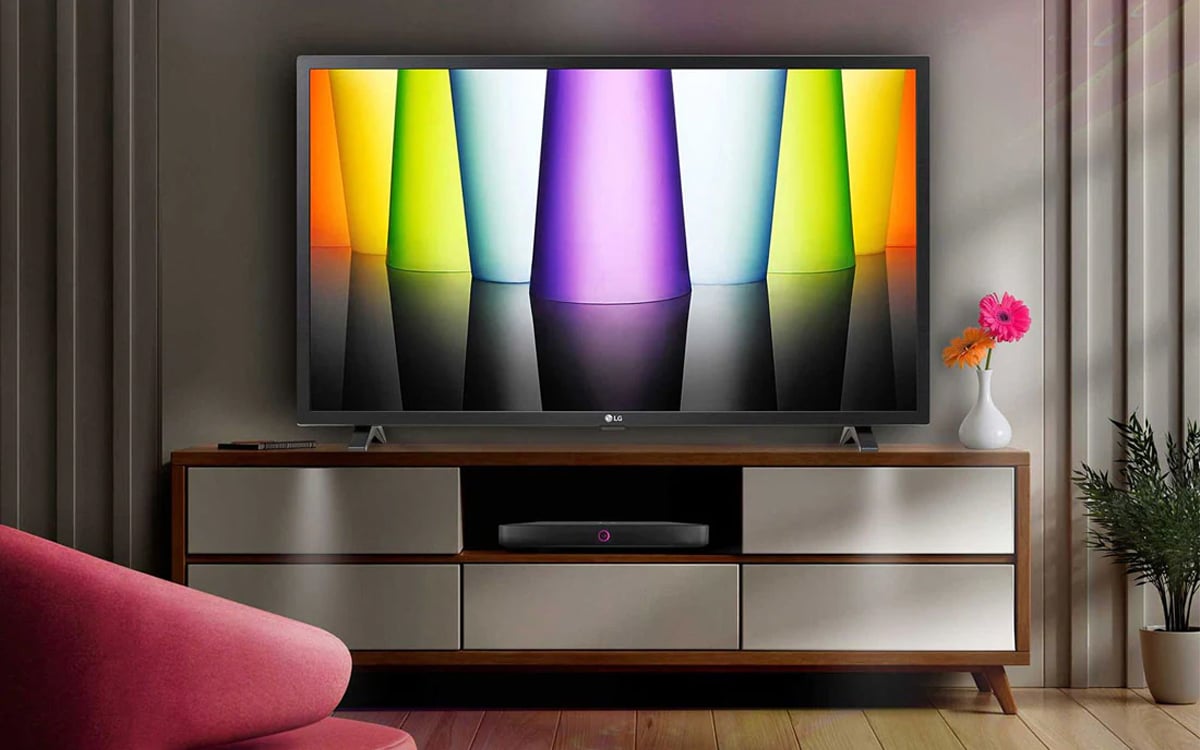LED TVs are still incredibly popular, and are a great option for anyone looking to grab a TV. But there’s a lot more to these TVs than might initially meet the eye. To truly understand why these TVs continue to endure to this very day, it’s worth taking a look to see how they work. To understand the inner workings of these TVs. So that you can decide whether an LED display might be the right option for you!
Ever wanted to understand LED TVs a little better? Then this is the guide for you. To help, our Reliant tech experts have collected their expansive knowledge of LED TVs, so that we could put together this comprehensive deep dive into LED display technology. Why don’t we get started?
What Is An LED TV?
LED TVs earned their name thanks to the unique way in which they function. There are two main components of an LED TV that are worth noting. One is the LCD layer, which is made up of millions of tiny pixels that can create specific colours by emitting specific wavelengths of light. Behind this layer is the LED layer, which is made up of a complex array of backlights.
The LED TV name comes from the inclusion of an LED layer. The LED layer is made up of a series of backlights that shine through the LCD layer in front. This creates a bright image for the viewer!
LED TVs, thus, derive their name from the light source that they use to project images out to the viewer. The use of backlights has helped to make LED TVs a very popular option, especially for shared spaces that are often subjected to sunlight. This is because the backlights are able to reach incredible brightness levels! But, more on that later…
How Do LED TVs Work?
In order to best understand how LED TVs work, we need to be clear on how LCD panels work. The LCD display of any LED TV is made up of a complex array of millions of different pixels. The more pixels there are, the higher the resolution that the TV can replicate. These pixels are responsible for creating the colours you see.
However, the way in which a TV’s pixels produce colour will depend on the type of display. An LCD pixel produces colour in a very unique way. LCD TVs make use of liquid crystals, which can rotate light. As the light is rotated, certain wavelengths are strengthened, while others are weakened. This might sound a little scientific, but effectively it allows LCD pixels to emit light of specific colours. The pixels themselves act as polarising filters that help to fully create each colour.
Liquid crystals can also turn on and off as needed, which allows them to replicate darker colours. This enhances contrast and helps to make all of the other colours look simply amazing!
Why Should You Go For An LED TV?
LED TVs are still very popular. But you might wonder what it is that makes them such a beloved option.
One great benefit that LED TVs have is their immense brightness. Compared to some other display types, LED TVs are able to achieve some truly high brightness levels. This makes them a fantastic option for rooms with plenty of ambient light. Whether your living room is often inundated with sunlight during the day, or you have a number of lamps you have turned on every evening, an LED display will still be immensely clear. It can produce more than enough light to compete with all kinds of ambient light.
LED TVs are also often some of the most affordable options on the market. Because LED panels have been used for so many years, they can now be produced on a much wider scale. In turn, they also cost far less to implement.
LED TVs are often very inexpensive, and very easy to get your hands on. They make for a perfect all-in-one display solution. They’re also incredibly bright and vibrant. Perfect for film, TV, and gaming!
LED TVs also serve as a perfect middle ground between all of the many competing display types. If you only need a basic TV, and you’re sick of weighing up the difference between different displays, then an LED TV might just be the solution!
Are LED TVs Good For Gaming?
The gaming world is most often dominated by the latest cutting-edge technology. Gamers are always on the lookout for the most powerful systems, the best controls, and the best displays. As such, many people assume that, because of their age, LED TVs aren’t suitable for gaming. However, this couldn’t actually be further from the truth. LED TVs are great for gaming!
LED TVs definitely don’t lack when it comes to visuals and performance. High resolutions and high frame rates can all be expertly displayed on the best LED TVs. LED TVs are available in 4K, which makes them perfect for gaming on the latest consoles. This is further helped by their support for HDR. For greater clarity and vibrancy in all of your favourite games, HDR is totally essential.
LED TVs also boast high refresh rates, especially some of the top models. In fact, some LED TVs can achieve refresh rates as quick as 9 milliseconds! High refresh rates allow games to be displayed with smooth and realistic motion. For those high-frame-rate online competitions, LED TVs are more than suitable!
Is OLED Better Than LED?
It’s undeniable the impact that OLED TVs have had on the wider television market. OLED displays promise far greater contrast and a more modern display experience. As such, many people assume that OLED TVs are definitively better than older LED TVs. However, the truth is a little more nuanced than that.
OLED TVs do offer greater contrast in their images, and this is thanks to how they work. As we mentioned earlier, LED TVs operate by having the LCD layer generate images, while the LED layer provides light to make those images visible. OLED TVs do not compartmentalise the process of rendering images. Instead, the pixels that make up OLED displays are responsible both for rendering images and providing their own light.
This means that OLED TVs actually operate without the need for a backlight. However, most importantly, this enhances contrast. This is because each of the pixels on an OLED display can turn on and off as needed. Which means that, when they’re switched off, they truly emit no light, and thus create true black values. These stronger black values enhance the contrast ratio, and therefore make colours look more vibrant!
LED TVs make use of backlights to project images. This in turn means that, occasionally, some of this light bleeds through the darkest parts of an image. Turning black colours into more of a muddy grey. However, many LED TVs have actually accounted for this, and have implemented their own useful technologies to prevent it.
Some LED TVs come with local dimming zones. Different lights in the backlight array are mapped to each of these different zones. These zones can then dim themselves as required for each image. This can help to enhance contrast and prevent light from bleeding through!
Is QLED Better Than LED?
In the case of QLED TVs, they might actually have a slight competitive edge over LED displays. The reason for this is that they function in mostly the same way, but with a unique visual twist.
QLED TVs, similar to their LED counterparts, make use of backlights to project images. They also make use of LCD layers to create their images. However, what sets them apart is their inclusion of a quantum dot layer.
Quantum dots are a special technology that can achieve some great results. Essentially, they are microscopic semiconductors that work together to emit different wavelengths of light. Whenever the dots are electrified, and combine together in different ways, they emit light of a different wavelength. Basically, this results in light of highly specific colours. What this essentially means is that quantum dots can replicate far more realistic colours than their counterparts.
QLED TVs are slightly better than LED TVs, thanks to their visual benefits. Quantum dots can create highly realistic and vibrant colours. To a much greater degree than other display types.
As such, QLED TVs are much better than LED TVs in terms of their clarity. When used to display a 4K image, QLED TVs look simply incredible!
However, it must be noted that QLED TVs often cost much more than LED TVs. This means they’re a much more significant investment. If you’re simply looking for a basic TV that can be used to display your favourite content, then you might find the cost of an LED TV a little more appealing.

Do LED TVs Have Any Disadvantages?
Potentially Lower Contrast
Unfortunately, because LED TVs make use of LED backlights, they are much more susceptible to light bleeding. This means that darker images might appear muddled, and contrast, overall, may be impacted. This can result in a slightly less satisfying experience.
Unless an LED TV has local dimming zone technology, it will ultimately have lower contrast. This is because the light from the backlights runs the risk of bleeding through the darkest zones of any image.
Luckily, some LED TVs account for this with local dimming zone technology. If you’re in the market for an LED TV, it’s worth looking for this technology. It will improve your experience massively.
Narrow Viewing Angles
Unfortunately, LED TVs often have a very narrow viewing angle. This means that they’re not the best option for busy households, or for hosting group viewing sessions.
The best way to illustrate this is to consider why OLED TVs are so great when it comes to viewing angles. As we explored earlier, the pixels of OLED TVs emit their own light. Because the light is being emitted from a position much closer to the front of the unit, it’s able to shine at much wider angles. Backlights, on the other hand, are farther away from the very front of a TV screen. This means that they can only emit light at specific angles.
If you often have a massive group of friends over to watch televised events, then you might be better suited to an OLED TV.
What Should You Consider When Buying An LED TV?
LED TVs are a very popular option both for people grabbing their first-ever TVs and for those looking for their next display. If our guide so far has piqued your interest in LED TVs, then you’ll definitely want to read down below. We’ve collected some of the most important factors that you should be sure to consider when looking for the perfect LED TV.
Screen Size
We might as well start by addressing the most popular factor. When looking for a new TV, most people find themselves excited by the prospect of grabbing the largest screen available. While larger screens are definitely great for creating a cinematic experience, you want to make sure your TV isn’t too big.
First, you’re going to need to consider your space. Do you already have a spot chosen for your new TV? Make sure to grab some accurate measurements. This way, you can pick a screen size that’s suitable. The first step is to simply make sure your new TV fits into your home! You don’t want to get your new display to the front door, only to find it simply won’t fit!
However, just as you don’t want your new TV to be too big, you also don’t want it to be too small. A perfectly sized TV should fill up your vision, without requiring you to bend your neck in all kinds of directions just to parse the whole image!
Towards this end, there is a great rule of thumb to follow. In order to make the most of any TV screen, there is a certain distance from which you should view it. This is calculated by taking the size of the screen and multiplying it by 1.2. If your room does not have enough space for this viewing distance, then it means the TV is too big for the space. For example, if you were to have an 85 inch TV, the optimal viewing distance would be around 102 inches. Not enough space for it? Grab a smaller screen!
Resolution
Until recent decades, there was not much choice when it came to finding the perfect TV resolution. TVs were either full HD or not HD at all! Now, TVs across the market are available with a number of different resolutions. So, you’ll want to dedicate some time to choosing the perfect one for you.
Generally, the size of the screen you choose will have an impact on the resolution you choose to pair it with. Larger screens look better with higher resolutions, and vice versa. As such, if you’re grabbing an LED TV of a larger size, such as one over 75 inches, you’ll want to grab one with a higher resolution. 4K in particular is excellently suited for some of the largest premium TVs on the market.
You’ll want to make sure your LED TV has the right screen size and a matching resolution. Make sure the screen isn’t too big or too small. And make sure the resolution is suited to the size!
If you’re grabbing a more compact television, such as one for a bedroom, or a kitchen, then resolution may not be too important a consideration. Resolution is a more important consideration when looking for a living room television for binge-watching and movie nights!
LED TVs look fantastic at any resolution, thanks to their use of liquid crystals, which render images with realistic colour and detail.
HDR
When you’re looking at the top TV models on the market, there’s one term that you’re going to come across often: HDR. It’s often used as a buzzword to entice people into buying particular models. But unless you know what it means, it can be tough to tell why exactly it should matter to you.
HDR is a special video and audio signal that features far greater detail than your standard signal. The greater detail carried in these signals allows content to be displayed with more lifelike detail that is much truer to the creator’s original vision. If you love film, it’s especially worth looking out for. It brings you much closer to the works of your favourite directors.
The greater detail in an HDR signal allows TVs to utilise more colours and brightness levels in order to bring images to life. Thus, if you’re opting for a TV with a greater screen size and resolution, then you’ll want to look for HDR support.
HDR quite literally allows the liquid crystals of an LED display to achieve even greater things, so it’s worth looking out for in one of your own.
Are 8K TVs Worth Buying?
Whether or not 8K is worth it depends on what you want out of your TV. As it currently stands, there’s very little content across the market that makes full use of 8K as a resolution. TV shows and films are still produced at 4K at the highest, and video games are currently capped at a total resolution of 4K on consoles. As such, it’s tough to call an 8K resolution truly essential.
However, 8K televisions are very much designed with the lack of 8K content in mind. 8K upscaling technology is found within a number of high-end TVs and is a useful technology to rely on. Essentially, what it does is analyse your content, as you watch it. The technology is always looking out for small ways to improve every image that flashes across the screen. By clearing up visual noise, and touching up small details, it can take average 4K or HD content, and make it appear as though it were natively 8K the whole time!
For an 8K TV to be truly worth the investment, you’d need to make good use of built-in 8K upscaling technology. This allows older content to still look right on a high-end 8K display!
If 8K upscaling sounds like it would suit your tastes, then it might be worth looking into an 8K LED TV.

Local Dimming Zones
If you’re stuck choosing between a few LED TV models, you’ll want to look out for local dimming zones. As we highlighted earlier, these are key to preventing instances of backlight bleed. This has a positive impact on the contrast of every image.
The more local dimming zones there are to be found in your LED TV, the more improved the image looks. When there are more zones to work with, the TV can more accurately change its brightness for specific parts of the image.
The number of dimming zones can truly vary from model to model. Where one model might have thousands of distinct dimming zones, another might have fewer than 100. For the best experience, it’s best to opt for the highest number possible.
Whether or not you need more dimming zones depends on the type of content you plan to enjoy. If your TV is for a smaller space like the kitchen, then you may not need many dimming zones at all. If you want to enjoy film and TV content, then more local dimming zones can improve the experience.
Energy Usage
Luckily, LED TVs are slightly more conservative when it comes to energy consumption. LED TVs consume slightly less than comparable OLED TVs, and have consistently improved in terms of efficiency since they were first released into the market.
To be sure you’re getting a truly efficient LED TV, look for each model’s energy rating. All TVs are required to be rated for efficiency before they are sent to market. After passing through a number of rigorous efficiency tests. An appliance is rated on a scale of “A” to “G”. It’s similar to how a school might grade an exam paper. An “A”-rated TV is considered the most efficient. A “G”-rated TV, on the other hand, is the least efficient.
Energy efficient LED TVs have a very small environmental impact. They also cost less to run. Using an efficient LED TV could quite literally save you money! Higher energy ratings are worth looking out for!
An “A”-rated TV might cost more to purchase but will cost less to operate. This could save you heaps of cash on your energy bills!
Smart Features
Smart TVs are now totally ubiquitous in the world of home entertainment. As such, it’s likely that you’ll already have designs on grabbing one of your own. However, you should take the time to consider each of the smart features offered by each model. This way, you’ll end up with a TV that actually suits your needs.
It’s also worth considering the operating system that each TV uses. You’ll want to find an operating system that’s powerful and responsive, but you’ll also want to make sure it’s easy to navigate. A smart TV can be jam-packed with features, but these can be a nightmare to use without a good user interface to access them.
It’s worth taking the time to research each model’s operating system and taking a look at the features offered.
Gaming Features
If you plan to enjoy the best of digital entertainment on your new LED TV, you’ll want to look out for key gaming features.
One of the most important of these is a high refresh rate. Higher refresh rates are required to display games at higher frame rates. If you play on a PlayStation 5, or Xbox Series X, then you’ll want a TV with a refresh rate higher than 120, so that you can play games at their highest output.
Want to game on an LED TV? You’ll want to look for a model with a high refresh rate and a low level of input lag. Lower input lag ensures there’s no disconnect between you and your in-game character.
Gaming mode is also a great feature found on some of the best gaming TVs. When gaming mode is activated on an LED TV, all post-processing visual effects are turned off. In turn, this reduces input lag exponentially. Luckily, LED TVs are blessed when it comes to input lag, and can often achieve refresh rates well under 9 milliseconds.
How Long Do LED TVs Last?
On average, LED TVs tend to last between 4 to 6 years. However, with good care, it’s incredibly easy to see an LED TV lasting longer than even 10 years!
If you take good care of your TV, you can easily see it looking its best for more than 100,000 hours of watch time. LED TVs are very durable thanks to their use of backlights to project images. This sets them apart from OLED displays which are susceptible to screen burn-in. LED TVs are not susceptible to screen burn-in, thanks to the fact that they don’t generate light through their pixels.
But how do you help an LED TV to last this long? We recommend some of the following tips!
How Do You Extend The Life Of An LED TV?
Don’t Touch The Screen
Touching a TV screen directly might seem innocuous in the moment, but it can actually have a very direct impact on the health of any TV. Even the lightest of touches could provide enough pressure to damage an LED TV’s display. If you exert enough force onto an LED screen, you can puncture some of the many layers. This can result in all kinds of distracting visual flaws that will require you to buy a new TV!
When you’re moving an LED TV into the perfect spot, we recommend that you avoid touching the screen wherever possible.
Lower The Brightness
The most important component of an LED TV is also the most likely to suffer damage. Through prolonged use at high brightness levels, the backlights of your TV will be slowly worn out. This would significantly shorten their lifespan, until, one day, the TV simply refuses to display anything!
Lowering the brightness of your TV will help you in a lot of ways. For one thing, it will help your TV to last much longer, by reducing strain on the backlights. Second, it can reduce eye strain!
A good way to prevent this issue is to lower the brightness whenever appropriate. This not only uses less energy but also reduces eye strain in the long run!
Keep It Clean
It might not initially occur to you to clean your TV, but it can have a positive impact. Cleaning your TV helps to keep it clear of dust and dirt that can easily find its way into the air vents. These air vents keep your TV cool and in good condition. Thus, keeping them clean is in your best interest.
All you need is a slightly damp cloth to wipe the screen, and a feather duster to tackle the vents!

Frequently Asked Questions
What Is An LED TV?
An LED TV is a display that makes use of an array of backlights to project an image to the viewer. LED TVs have been around for some time, but are still immensely popular. They boast great brightness levels and are a great all-around display option. This explains their great longevity.
Is A LED TV The Same As A Smart TV?
No. LED is a display technology used in some TVs. While some LED TVs do have smart features, not all of them do. Therefore an LED TV does not entail smart features. A smart TV is one that can connect to the internet, and perform a number of additional functions that the average TV is incapable of.





